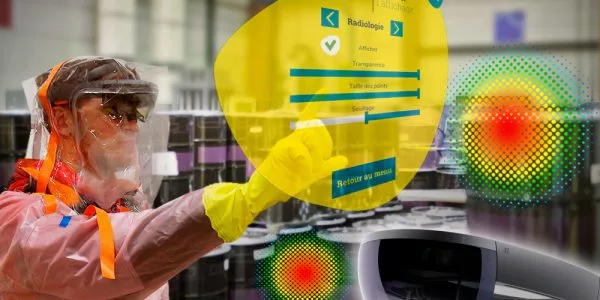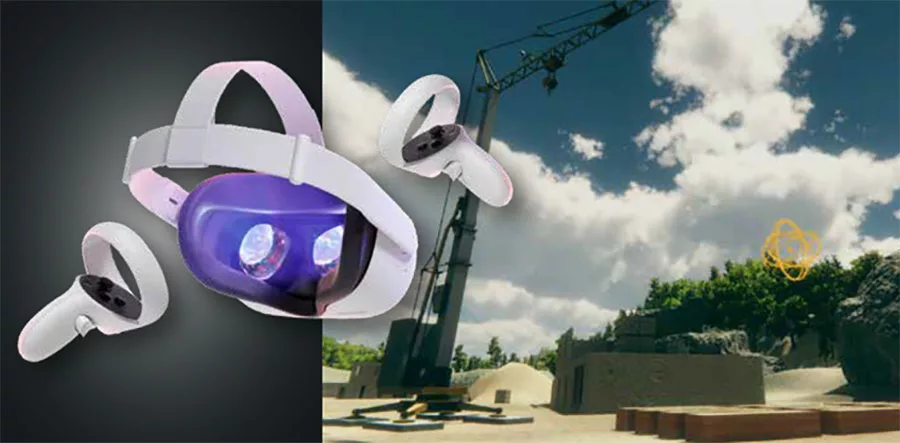Augmented reality and mixed reality: definitions and distinctions
Augmented reality allows for the simultaneous display of virtual objects and a real environment through a smartphone, tablet, or dedicated glasses. The device’s cameras capture various elements of the real world to accurately position the virtual objects. Meanwhile, the device’s inertial sensors (accelerometer, gyroscope) help estimate the observer’s movement.
Mixed reality, as the name suggests, is the fusion of augmented reality and virtual reality. Using a headset (similar to a virtual reality headset), the user can see the real environment with integrated virtual elements (AR) or experience a completely virtual environment (VR).
Compared to augmented reality, using a headset rather than a smartphone or tablet allows for better immersion in the simulation and improved interaction with the virtual elements, through controllers or hand tracking instead of a tap on a screen.
Mixed reality to enhance the user experience
Compared to virtual reality, incorporating augmented reality features introduces new application scenarios. For example, transitioning from virtual reality to mixed reality in industrial training allows learners to interact with a production line while being guided by operational procedures through text, images, videos, and more. They are supported by virtual interfaces but can also receive alerts if they approach a hazardous area.
One could imagine having, within the same application, a virtual reality training module for new learners and a mixed reality module for more experienced learners.
Mixed reality is also highly valuable for maintenance operations, as it speeds up defect detection and ensures traceability of the tasks performed. Additionally, the operator can visualize each step of the process and even request assistance from a remote expert in case of major difficulties. This is what we refer to as smart maintenance.
One can easily imagine numerous applications across various fields: assistance in medical procedures, guidance for operators in the logistics sector, and more.
Mixed reality: impressive innovations for an immersive experience
All mixed reality headsets are standalone, meaning they do not need to be connected to a computer to operate (although some headsets offer the option to be used in wired mode for VR).
With the HoloLens (2016), Microsoft is a pioneer in the field of mixed reality, as it was the first mixed reality headset to be commercially released.
There are also other versions, such as the HoloLens 2. This version has the advantage of being better suited to the industrial sector, for example, by supporting regulated environments such as clean rooms and hazardous locations, or integrating with a safety helmet.
Virtual reality headset manufacturers (Meta, Vive, Pico, etc.) have followed suit by creating new headsets that enable mixed reality (2022). These headsets offer better performance, greater comfort, and improved lightweight design.
The main difference between the HoloLens and its competitors lies in the rendering mode of virtual objects. With the HoloLens, the virtual environment is visible through the visor, and virtual objects are overlaid on top (see-through). In contrast, other headsets use cameras to capture the environment and superimpose virtual objects onto it (passthrough). This difference in rendering mode primarily affects the field of view in the headset, which in turn impacts the sense of immersion: the closer the field of view is to that of the human eye (220°), the greater the sense of immersion.
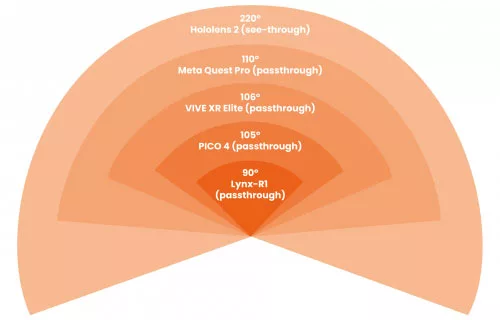
The main headsets on the market and their characteristics:
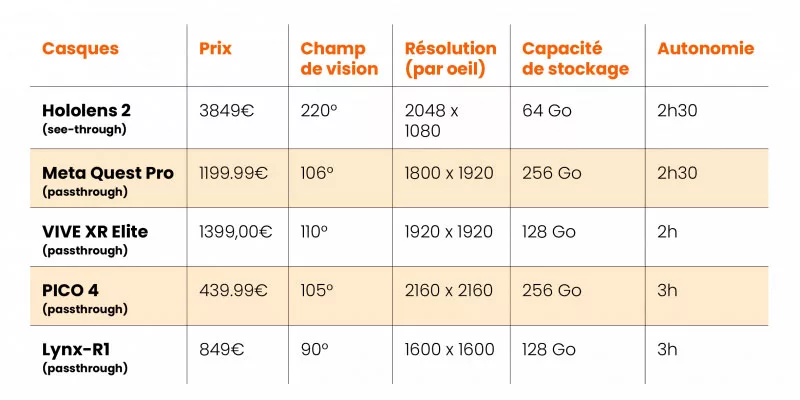
Audace Projects
Augmented reality at Audace: fire safety for BPCE – Natixis
Augmented reality eLearning on tablets for fire safety. The user is situated in one of the corridors of their workplace. Equipped with their tablet, they are invited to scan the images that appear to them (on the walls of the facility). Then appears, overlaying the real world, with questions, video animations, as well as real-time 3D simulations, such as a trash bin fire. Their response to the simulated event (e.g., the appearance of a thick cloud of smoke) triggers the display of training tools : videos, documentation, and more.
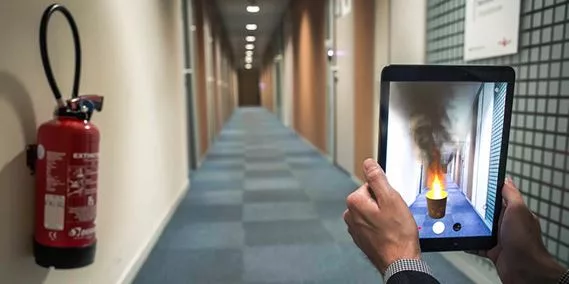
Mixed reality at Audace: Volvo D8 engine – Exxotest
Mixed reality project with the HoloLens, which allows for overlaying a Volvo D8 industrial engine onto real equipment for maintenance training. The learner can then observe the operation of the engine and its functional systems, such as the air, oil, and fuel circuits. They can also access technical information, followed by quizzes and animations to facilitate their learning.
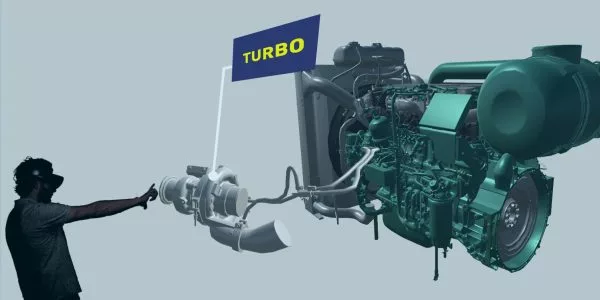
Mixed reality at Audace: Smart maintenance – Orano
Given the need to minimize radiation exposure for maintenance personnel working in EDF operational centers, AUDACE, in partnership with ORANO’s RD department, has developed a mixed reality device for maintenance assistance with radiation detection and visualization. The glasses are used by the maintenance staff and allow technicians to visualize (and avoid!) radiation hotspots and follow intervention instructions step-by-step.
